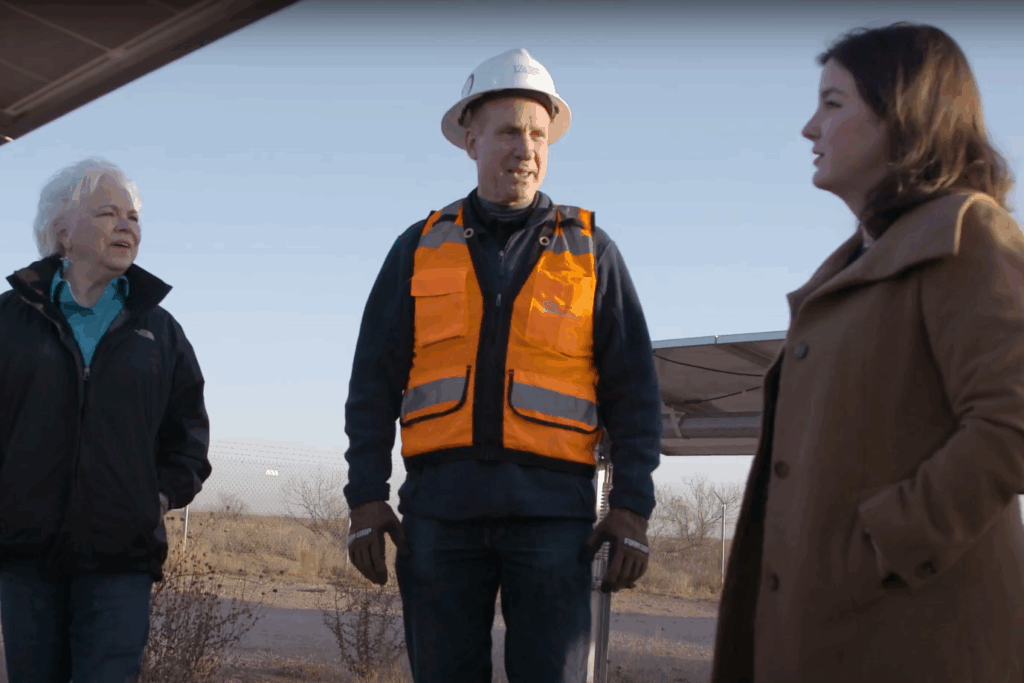Explore the journey of transforming a cattle ranch into a 180MW solar project in Texas, showcasing the future of renewable energy and the impact on the local community.
The Genesis of the Oberon Solar Project
The history of this land begins with Glenn Allen, who established a sprawling 30,000-acre ranch and delved into cattle ranching. However, by the 1940s, oil became a significant part of the region’s story. The history of Odessa, Texas, is intrinsically tied to oil and gas, which have been the backbone of its economy for nearly a century. While Allen’s ranch wasn’t situated in the primary oil-rich zones of the Permian Basin, its unique location eventually led to a groundbreaking transition: solar development.
From Oil to Solar: A Paradigm Shift
The Spark of Interest
In 2016, Ashley Watt made a pivotal outreach to Glenn Allen’s descendants with a proposition that would herald a new era for the land: solar energy. Her query was straightforward but transformative: “Are you interested in putting solar on my land out here in West Texas?” This question marked the inception of the Oberon Solar Project.
Construction and Community
Construction of the solar facility began in the first quarter of 2019, marking a significant shift in the land’s utilization. The initial meeting between the project team and Ashley’s father, Richard, encapsulated the ethos of the development. Richard’s simple yet powerful mandate to the developers was: “Keep the property clean and keep it secure.”
This directive became the guiding principle for the entire construction process, which spanned about a year and culminated in the project becoming operational in July 2020. The transition from oil to solar was not merely physical; it represented a significant cultural and economic shift for the region.
Technology and Scale
The First Big Solar Project
As the first major solar project in the county, Oberon faced numerous questions and concerns, typical of any pioneering endeavor. The novel technology and the sheer scale of the project demanded extensive collaboration and understanding.
The Mammoth Undertaking
To grasp the enormity of the Oberon Solar Project, consider its scale: the first phase alone boasts 655,000 solar panels spread over 1,500 acres. The site comprises two individual plants that collectively generate 180 megawatts of power. This facility is designed to have a lifespan of 25 to 30 years, contributing significantly to the future of energy in Texas.
Local Impact and Benefits
The most remarkable aspect of this project is that the energy it generates stays within Texas, benefiting local communities directly. Moreover, the project has brought substantial benefits, including numerous construction jobs and significant capital investment. The successful completion of Oberon has positioned the region as a capable host for large-scale solar projects.
Legacy and Future Prospects
A Tribute to Family and Vision
The project holds deep personal significance for the Allen family. Although Ashley’s mother passed away in 2018, she was aware of the impending development, though she never witnessed its completion. Her father attended the groundbreaking ceremony before his passing, leaving behind a legacy of innovation and progress. The transformation of their land from cattle ranching to solar energy stands as a testament to their forward-thinking spirit.
Solar: The Future of Energy
The Oberon Project is not just a landmark achievement but a harbinger of the future. Solar energy, with its efficiency and cost-effectiveness, is poised to play a crucial role in the global energy landscape. The potential for solar development is vast, not just in West Texas but across regions similarly endowed with sunlight.
Scaling New Heights
The evolution of solar technology is relentless, with improvements in efficiency and scalability continuously emerging. This trend suggests that solar facilities will become increasingly common, akin to the ubiquity of cornfields in agricultural landscapes.
Conclusion
The Oberon Solar Project represents a journey from traditional ranching and oil-centric beginnings to a sustainable and innovative future powered by solar energy. It underscores the potential for solar technology to transform economies, create jobs, and contribute to a cleaner, more sustainable future. As solar panels increasingly dot the landscape, they symbolize not just an energy revolution but a brighter future for communities and the environment alike.

